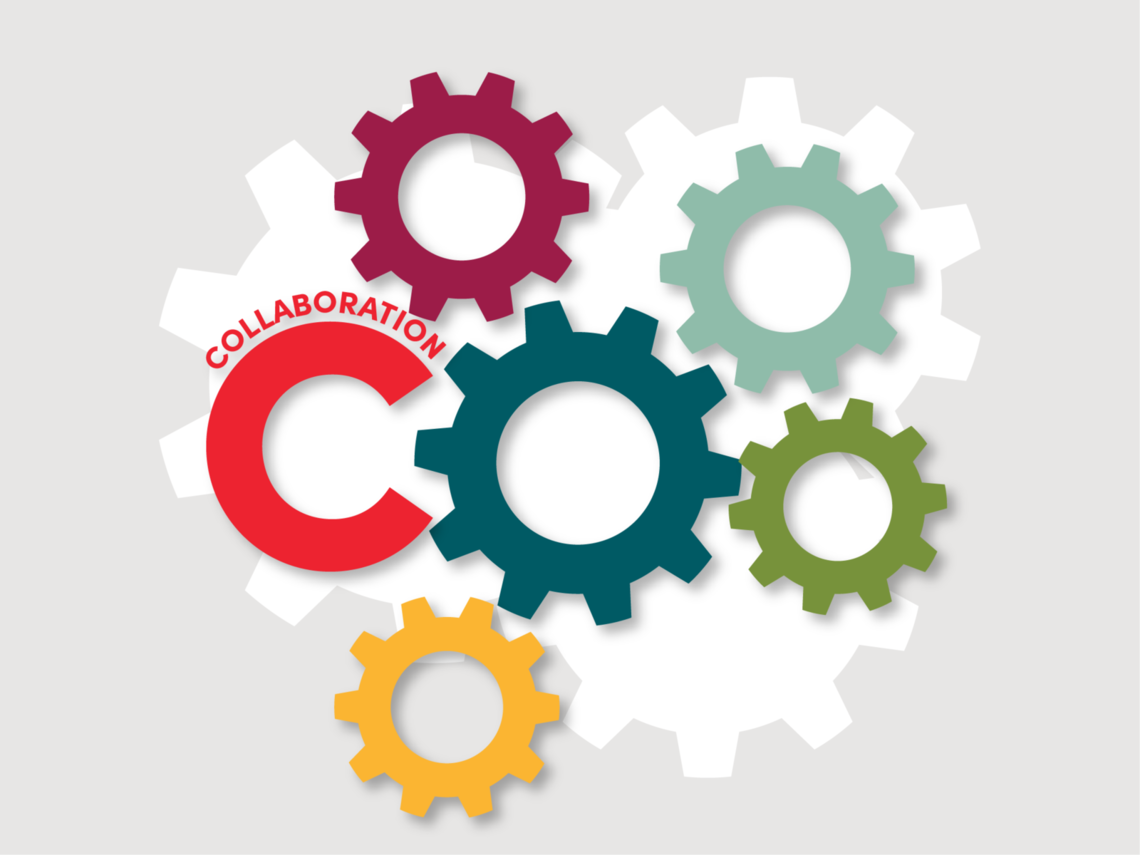
Read this article's companion piece, Four Things Collaborative Leaders Do, by Chris Fairbank.
very one of us, regardless of role or job responsibility, has to work as part of a team. Teams, just like any relationship, go through stages of development and change. In Bruce W. Tuckman's framework for stages of team development, he describes how people may feel and behave in each stage. He classifies the five stages of development as:
- Forming
- Storming
- Norming
- Performing
- Ending
Tuckman’s framework is helpful in understanding how we collaborate as functional teams, as well as in collaborating with system-level teams of teams, which is most helpful in my role.
Though I have only been at the University a little over a year, I have worked in HR Analytics and HR Systems for the better part of 12 years in a variety of industries. In every case, systems rely on complex technical infrastructure and a coordinated network of administrators and technical experts. When systems work well, it is because the teams work well.
Working through the stages of team development
For the past year, my team has been working with frontline education experts across the health system to improve how we use our learning management software. We formalized our collaboration by developing the “Learning Council,” which includes key education stakeholders, representatives from organizational development, and human resources IT.
The Learning Council is a new team, still learning how to work together. As we move forward, we are moving through the five stages described by Tuckman and learning how team dynamics affect not only our work, but how the employees across the organization work together.
Forming – the honeymoon phase
The forming stage is exciting. Team members may have high expectations and ask a lot of questions about how the team will work. They may also feel anxious or uncertain, worried about how the team will perform and how they will perform.
During the forming stage, the most important task is to create clear structure, goals and roles within the team. When we started the Learning Council, we started by clearly outlining which representatives would have ownership over what tasks. For instance, our Human Resources IT Team agreed to handle the technical aspects of any projects and solving glitches that currently exist within the system.
By outlining our goals of improving the use of the Learning Management System (LMS) and defining clear responsibilities, we were able to start working together on the same page.
Storming – stuff gets real
Teams that get off to a great start can have trouble in the next stage of development: storming. In this stage, team members might feel frustrated when the group is not meeting the expectations they had coming in. They may be frustrated with unachieved goals or express disagreement with assigned responsibilities. Problems may pop up and people may not handle them well due to disappointment.
As the Learning Council’s work moved forward, we discovered that not all the problems with training had to do with the technical system but gaps in knowledge about properly administering content in the LMS. We learned that during system implementation, formalized trainings and consistent system guidance were not provided to admins. We also learned about the historical team and personality dynamics that prohibited collaboration.
As the root cause of problems with LMS became clearer, we had to refocus our goals as a group. Refocusing can help get rid of frustration and give people new tasks to focus on as they move forward. We also had to work to build trust between teams that do not usually work together. This step takes time but is essential to continue our progress.
Norming – getting in the groove
After refocusing the team, the next stage of development, norming, begins. During this stage, team members gain a more realistic expectation of what they can achieve and adapt more to the work. As team members work together better and make efforts toward harmony, productivity can increase dramatically.
For the Learning Council, this stage had many wins. In order to drastically improve the user experience for online training, we learned that the content needed to be converted into a new format. Several of our education teams are working together to convert content and create a process moving forward for adding new content to the LMS. They are working toward a harmonious relationship that will help them achieve the goals of the Learning Council.
Performing – we’re almost there
Finally, in the performing stage, teams begin to click. They feel proud of the progress they made and can work together to achieve great progress. They problem solve together and can easily step in to help others as there is a great understanding of everyone’s roles.
On the Learning Council, the team has made great strides in working together to improve how the LMS works for administrators and employees. Our team is increasingly comfortable being transparent with each other and are reaching out individually to communicate on tasks that need completed. Team members also share issues they are seeing and working together to solve the problem.
Ending – the ‘nirvana’ of collaboration
The long-term goal of any team development is to reach the less-often mentioned fifth stage: ending. In this final stage, teams no longer need group meetings or team outlines to work together. They have a culture of collaboration that leads them to easily share and problem solve individually.
My dream is that the groups brought together as part of the Learning Council at some point will no longer need my leadership or a formal work structure to reach out to one another and work together. As we continue to work together on the LMS, we can develop a team dynamic that will carry on into the future and can tackle any new problems that occur.
The Complete Clinician Model Toolkit
This article is part of the Complete Clinician Model Toolkit.
The toolkit provides resources for individuals and teams to build and integrate relationship management skills into daily training and work.
Editor's Note: “The Power of Outsiders”
Amanda joined the University in 2019 after developing breadth and depth of expertise in multiple industries. This “inside-outsider” point of view has been linked to some of the most impactful innovations throughout history.
This quick video (below) from the New York Times by Charles Duhigg uses the story of Malcom McLean to show how one outsider changed history forever.
When you have a really challenging problem, look for your local inside-outsiders to bring new insight to the challenge. This might be a new team member or someone from a different department or discipline.
Originally published October 2020
Amanda White
It’s clear that fee-for-service health care isn't working—so what alternative payment model does?
Step into the shoes of James Mwizerwa, environmental services supervisor, to learn how he and his team stay resilient and persevere through their demanding work.
Real teams are the antidote to the chaos of modern medicine. “Real teams know each other, feel loyalty to one another, trust one another, and would not want to disappoint one another” (Tom Lee, NEJM Catalyst 2016). Practicing are conversations between real team members about why the work matters. Our goal is to preserve and share the stories of the teams at University of Utah Health.
